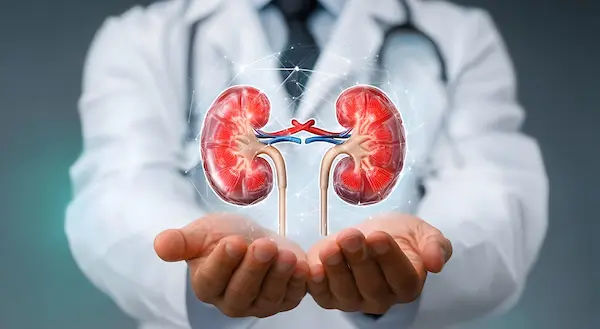Himalayan Salt Compared to Table Salt
Himalayan pink salt vs. table salt: Uncover the real differences in processing, mineral content, taste, and potential health implications. Learn which salt is right for your kitchen and health goals.


Introduction
Salt is an essential part of our diet, adding flavor to our food and playing a crucial role in bodily functions. However, not all salts are created equal. You may have heard about Himalayan salt and wondered how it compares to regular table salt. Let’s break down the differences, health benefits, and which one might be the better choice for you.
What Is Himalayan Salt?
Himalayan salt, also known as pink salt, is mined from the Khewra Salt Mine in Pakistan, near the Himalayas. It gets its distinctive pink color from trace minerals like iron, magnesium, calcium, and potassium. Unlike refined table salt, Himalayan salt is less processed and is often sold in coarse or fine crystals.
What Is Table Salt?
Table salt is the most common type of salt found in households. It is highly refined, meaning most impurities and minerals are removed during processing. To prevent clumping, it often contains anticaking agents, and most table salt is iodized (fortified with iodine), which helps prevent iodine deficiency.
Key Differences Between Himalayan Salt and Table Salt
Key differences between himalayan salt and table salt are as follows:
Health Benefits of Himalayan Salt
Health benefits are:
Rich in Trace Minerals – Himalayan salt contains small amounts of electrolytes like potassium, magnesium, and calcium, which support muscle function and hydration.
Less Processed – Since it’s not heavily refined, it retains more natural minerals.
Lower Sodium per Serving – Due to its larger crystal size, you may use slightly less sodium per serving compared to fine table salt.
No Additives – Unlike table salt, it doesn’t contain anticaking agents.
Health Concerns with Table Salt
Things to keep in mind:
High Sodium Content – Excessive sodium intake is linked to high blood pressure, heart disease, and stroke.
Additives – Some anticaking agents (like sodium aluminosilicate) may be a concern for sensitive individuals.
Iodine Deficiency Risk – While iodized salt helps prevent deficiency, switching entirely to Himalayan salt may reduce iodine intake unless you get it from other sources (like seafood or dairy).
Which One Should You Choose?
The ones which should be chosen:
Himalayan Salt May Be Better If:
You prefer a less processed option.
You want additional trace minerals.
You are looking for a milder flavor (due to larger crystals).
Table Salt May Be Better If:
You need iodine in your diet (important for thyroid health).
You prefer a fine texture for cooking and baking.
You are on a budget (Himalayan salt is usually more expensive).
Consult Top Specialists for Personalised Tips
Tips for Healthy Salt Consumption
Tips for healthy salt consumption:
1. Moderation is Key – The WHO recommends no more than 5g (1 tsp) of salt per day to avoid high blood pressure.
2. Use Herbs & Spices – Reduce salt intake by flavoring food with garlic, lemon, or herbs.
3. Read Labels – Processed foods (chips, canned soups, sauces) contain hidden salt.
4. Stay Hydrated – Drinking enough water helps balance sodium levels.
When to Consult a Doctor?
If you have:
High blood pressure
Kidney disease
Heart conditions
Iodine deficiency concerns
It’s best to consult a doctor or nutritionist before making major dietary changes.
Need Expert Advice?
If you’re unsure which salt is right for you, you can consult a nutritionist or book a health check-up on Apollo 24|7 for personalized guidance.
Final Thoughts
Both Himalayan salt and table salt have their pros and cons. While Himalayan salt offers trace minerals and a natural alternative, table salt provides essential iodine. The best choice depends on your health needs, budget, and taste preference. The most important thing is to use salt in moderation for a balanced diet.
Would you like to switch to Himalayan salt, or do you prefer sticking with table salt? Let us know in the comments!
Consult Top Nutritionists
Consult Top Specialists for Personalised Tips

Dr. Ramalinga Reddy
General Physician
5 Years • MBBS MD General medicine
Bengaluru
PRESTIGE SHANTHINIKETAN - SOCIETY CLINIC, Bengaluru
Mrs Sneha P V
Nutritionist
10 Years • Master of science in Food and Nutrition
Bengaluru
Apollo Clinic, Sarjapur Road, Bengaluru
Dt. Ila Sharma
Clinical Nutritionist
18 Years • Master in food & Nutrition
Gurugram
VIPUL GREENS - SOCIETY CLINIC, Gurugram
Ms. Bhavana Shetty
Dietician
7 Years • DDHN & Masters in Clinical Nutrition & Dietetics
Bangalore
Apollo Sugar Clinic, Seetha circle bangalore, Bangalore
Dr Sumanth R
General Physician
2 Years • MBBS
Bengaluru
PRESTIGE SHANTHINIKETAN - SOCIETY CLINIC, Bengaluru
Consult Top Nutritionists

Dr. Ramalinga Reddy
General Physician
5 Years • MBBS MD General medicine
Bengaluru
PRESTIGE SHANTHINIKETAN - SOCIETY CLINIC, Bengaluru
Mrs Sneha P V
Nutritionist
10 Years • Master of science in Food and Nutrition
Bengaluru
Apollo Clinic, Sarjapur Road, Bengaluru
Dt. Ila Sharma
Clinical Nutritionist
18 Years • Master in food & Nutrition
Gurugram
VIPUL GREENS - SOCIETY CLINIC, Gurugram
Ms. Bhavana Shetty
Dietician
7 Years • DDHN & Masters in Clinical Nutrition & Dietetics
Bangalore
Apollo Sugar Clinic, Seetha circle bangalore, Bangalore
Dr Sumanth R
General Physician
2 Years • MBBS
Bengaluru
PRESTIGE SHANTHINIKETAN - SOCIETY CLINIC, Bengaluru




